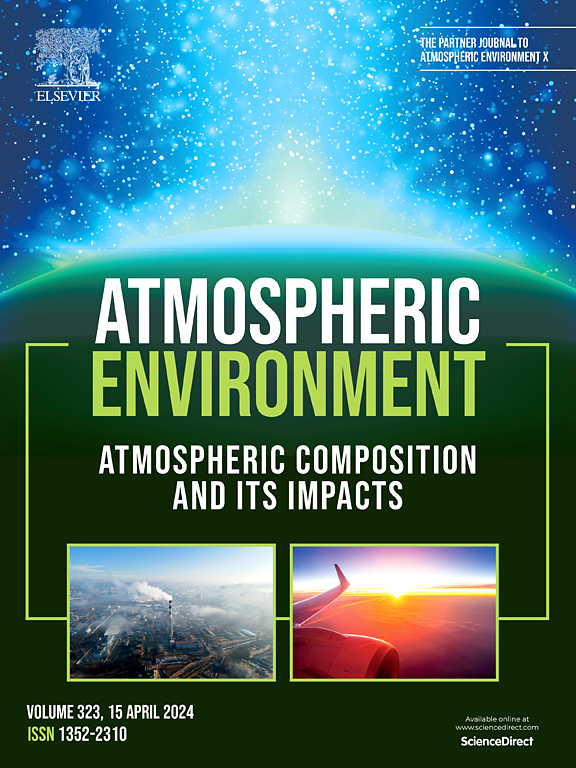Diagnosing ozone formation regimes in Shandong province, China (2019–2023): Implications for volatile organic compounds control policies during the warm season and COVID-19 lockdowns
IF 4.2
2区 环境科学与生态学
Q2 ENVIRONMENTAL SCIENCES
引用次数: 0
Abstract
Ground-level ozone (O3) concentrations in Shandong Province have exhibited a dynamic trend, characterized by an initial decline followed by a rebound. To investigate the drivers of these changes, we combined satellite-derived formaldehyde-to-nitrogen dioxide ratios (HCHO/NO2) with ground-based O3 measurements to establish a diagnostic threshold for O3 formation sensitivity. Results reveal a transition from NOx-limited/transitional regimes to VOC-limited regimes from 2019 to 2021, followed by a gradual reversal to transitional regimes from 2021 to 2023. Satellite observations corroborate this trend, showing a rebound in HCHO columns alongside a sharp decline in NO2 columns between 2019 and 2023. These findings highlight that while stringent NOx emission controls have succeeded in reducing NO2 levels over the past five years, insufficient VOC mitigation has enabled O3 resurgence. During COVID-19 lockdowns, we found that abrupt NOx reductions did not shift Shandong to NOx-limited regimes. Unbalanced emission reductions lead to O3 increases, with at least 60 % VOC reductions required to offset O3 rises. This suggests that future measures (e.g., transport electrification) may be insufficient without synergistic VOC/NOx control.
诊断中国山东省臭氧形成机制(2019-2023):对暖季和COVID-19封锁期间挥发性有机化合物控制政策的影响
山东省地面臭氧(O3)浓度呈现先下降后反弹的动态变化趋势。为了研究这些变化的驱动因素,我们将卫星获取的甲醛与二氧化氮比(HCHO/NO2)与地面测量的O3数据结合起来,建立了O3地层敏感性的诊断阈值。结果显示,从2019年到2021年,从nox限制/过渡性制度过渡到voc限制制度,然后从2021年到2023年逐步逆转到过渡性制度。卫星观测证实了这一趋势,显示2019年至2023年间,HCHO列出现反弹,二氧化氮列急剧下降。这些发现强调,虽然严格的氮氧化物排放控制在过去五年中成功地降低了二氧化氮水平,但挥发性有机化合物的减排力度不够,导致了二氧化氮的死灰复燃。在COVID-19封锁期间,我们发现突然减少氮氧化物并没有使山东转向氮氧化物限制制度。不平衡的减排导致O3增加,至少需要减少60%的VOC来抵消O3的增加。这表明,如果没有协同的VOC/NOx控制,未来的措施(例如运输电气化)可能是不够的。
本文章由计算机程序翻译,如有差异,请以英文原文为准。
求助全文
约1分钟内获得全文
求助全文
来源期刊

Atmospheric Environment
环境科学-环境科学
CiteScore
9.40
自引率
8.00%
发文量
458
审稿时长
53 days
期刊介绍:
Atmospheric Environment has an open access mirror journal Atmospheric Environment: X, sharing the same aims and scope, editorial team, submission system and rigorous peer review.
Atmospheric Environment is the international journal for scientists in different disciplines related to atmospheric composition and its impacts. The journal publishes scientific articles with atmospheric relevance of emissions and depositions of gaseous and particulate compounds, chemical processes and physical effects in the atmosphere, as well as impacts of the changing atmospheric composition on human health, air quality, climate change, and ecosystems.
 求助内容:
求助内容: 应助结果提醒方式:
应助结果提醒方式:


